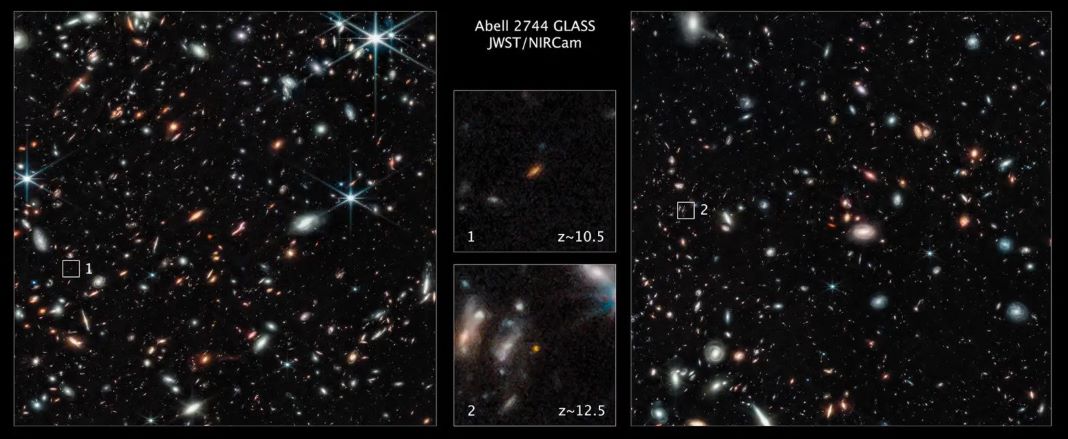Scientist says the Universe could be twice the estimated age
Rajendra Gupta, a theoretical physicist and professor at the University of Ottawa, Canada, has employed the existing theory of expanding cosmos and the so-called “tired light” hypothesis to discover that the Bing Bang, the mother explosion of everything, actually happened much earlier than believed.
Astronomers normally count the years since the Big Bang and study the oldest stars in space in order to estimate the age of our Universe. That’s how they reached the conclusion that the origin of matter, space and time began 13,797 million years ago.

Most distant galaxies captured by NASA so far.
Gupta kicked off from the fact that many stars are proven to be older than the Universe and mentioned in his study that the age of the Universe can be calculated in the same way that let us know the birthday of a child from its height: by estimating the expansion rate.
Objects in the cosmos appear slightly redder at a distance than their characteristic light patterns might lead us to expect. This is because space expands, separating those light waves like a pulled spring.
More to read:
Space X offers software engineer’s job to 14-year-old boy
The “tired light” theory suggests that the progressive loss of photon energy over enormous cosmic distances causes the redshift of light from distant galaxies.
Thus, by working backwards on this estimated growth rate, it is possible to use expansion to determine when the Universe was just a boiling sphere of concentrated energy.
However, Gupta thinks that this light shift can be interpreted differently, as a "hybrid phenomenon" rather than solely the result of expansion. His hypothesis joins two models of the expanding Universe: one based on standard assumptions about the uniformity and flatness of the cosmos, and a second that introduces some adjustments related to what is known as a coupling constant.
Coupling constants describe force interactions between particles, such as how the electromagnetic fields of two protons that are in close proximity will affect each other's behavior in specific ways. In theory, all forces in the cosmos have a coupling constant, although it is not necessarily "constant" since it changes with energy. This leaves room for the coupling constants to vary enough to affect the behavior of the light.
So, if this constant has changed over time, current calculations about the age of the Universe should be dismissed.
“Our newly devised model stretches the galaxy formation time by several billion years, making the universe 26.7 billion years old, not 13.7 billion as previously estimated. This combination of theories could even help solve why the first quasars and galaxies appear to be billions of years old," the scientist said.
Although this model has been studied, it is still an interpretation, not a truth.
Rajendra Gupta considers that the conventional model of the "cosmological constant", which represents the dark energy responsible for the accelerated expansion of the cosmos, must be updated, as per his study which was published in early July in the Monthly Notices of the Royal Astronomical Society.
More to read:
UAE to send spacecraft to Asteroid Belt in search for water
For this reason, his hybrid hypothesis proposes that the Universe really is as big as we think and addresses why early galaxies appear smaller than expected despite their well-developed masses.
If Gupta’s interpretation is correct, and our Universe is indeed twice as older as most of us think, physics as a science will undergo a serious overhauling.







